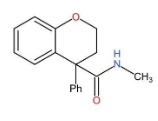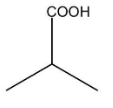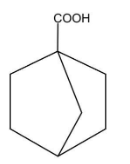
Answer
461.1k+ views
Hint:HVZ reaction stands for Hell-Volhard-Zelinsky halogenation. It is used for the bromination in the alpha position of a compound in the reaction.
Complete step by step answer:
Hell-Volhard-Zelinsky reaction is different from other halogenation reactions because it takes place in the absence of the halogenation carrier. This reaction is used for the halogenation of the carboxylic acids attached at the alpha carbon which has an alpha hydrogen.
- The reaction is initiated by the addition of potassium tribromide and then the addition of one molar equivalent of diatomic bromine.
- This reaction is carried out at very severe conditions involving temperature above 373K and increased reaction time.
- Let us now see which of these compounds have alpha carbon and can undergo HVZ reaction.
Alpha carbon is the first carbon atom that is attached to a functional group (-COOH in this case) and alpha hydrogen is the hydrogen attached to the alpha carbon.
A.

In this compound, there is an alpha carbon present, but there is no alpha hydrogen present in this compound. Therefore, it does not undergo HVZ reaction.
B.
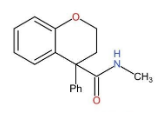
In this compound, there is no carboxylic group present and therefore, it does not undergo HVZ reaction.
C.
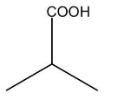
In this compound, there is an alpha carbon present along with the alpha hydrogen. Therefore, this compound will undergo an HVZ reaction. The reaction is shown below:

D.
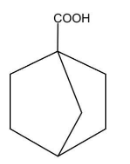
In this compound, there is an alpha carbon present but there is no alpha hydrogen present. Therefore, this compound will not undergo HVZ reaction.
Therefore, only option (c) will undergo HVZ reaction. Hence, the correct option is option (c).
Note:
The HVZ reaction fails the fluorination and iodination of carboxylic acids. And if it is conducted at high temperatures, elimination of hydrogen halides from the product, resulting in the formation of beta unsaturated carboxylic acids.
Complete step by step answer:
Hell-Volhard-Zelinsky reaction is different from other halogenation reactions because it takes place in the absence of the halogenation carrier. This reaction is used for the halogenation of the carboxylic acids attached at the alpha carbon which has an alpha hydrogen.
- The reaction is initiated by the addition of potassium tribromide and then the addition of one molar equivalent of diatomic bromine.
- This reaction is carried out at very severe conditions involving temperature above 373K and increased reaction time.
- Let us now see which of these compounds have alpha carbon and can undergo HVZ reaction.
Alpha carbon is the first carbon atom that is attached to a functional group (-COOH in this case) and alpha hydrogen is the hydrogen attached to the alpha carbon.
A.

In this compound, there is an alpha carbon present, but there is no alpha hydrogen present in this compound. Therefore, it does not undergo HVZ reaction.
B.

In this compound, there is no carboxylic group present and therefore, it does not undergo HVZ reaction.
C.

In this compound, there is an alpha carbon present along with the alpha hydrogen. Therefore, this compound will undergo an HVZ reaction. The reaction is shown below:

D.

In this compound, there is an alpha carbon present but there is no alpha hydrogen present. Therefore, this compound will not undergo HVZ reaction.
Therefore, only option (c) will undergo HVZ reaction. Hence, the correct option is option (c).
Note:
The HVZ reaction fails the fluorination and iodination of carboxylic acids. And if it is conducted at high temperatures, elimination of hydrogen halides from the product, resulting in the formation of beta unsaturated carboxylic acids.
Recently Updated Pages
Who among the following was the religious guru of class 7 social science CBSE

what is the correct chronological order of the following class 10 social science CBSE

Which of the following was not the actual cause for class 10 social science CBSE

Which of the following statements is not correct A class 10 social science CBSE

Which of the following leaders was not present in the class 10 social science CBSE

Garampani Sanctuary is located at A Diphu Assam B Gangtok class 10 social science CBSE

Trending doubts
A rainbow has circular shape because A The earth is class 11 physics CBSE

Which are the Top 10 Largest Countries of the World?

Fill the blanks with the suitable prepositions 1 The class 9 english CBSE

How do you graph the function fx 4x class 9 maths CBSE

The Equation xxx + 2 is Satisfied when x is Equal to Class 10 Maths

What is BLO What is the full form of BLO class 8 social science CBSE

Give 10 examples for herbs , shrubs , climbers , creepers

What organs are located on the left side of your body class 11 biology CBSE

Change the following sentences into negative and interrogative class 10 english CBSE


